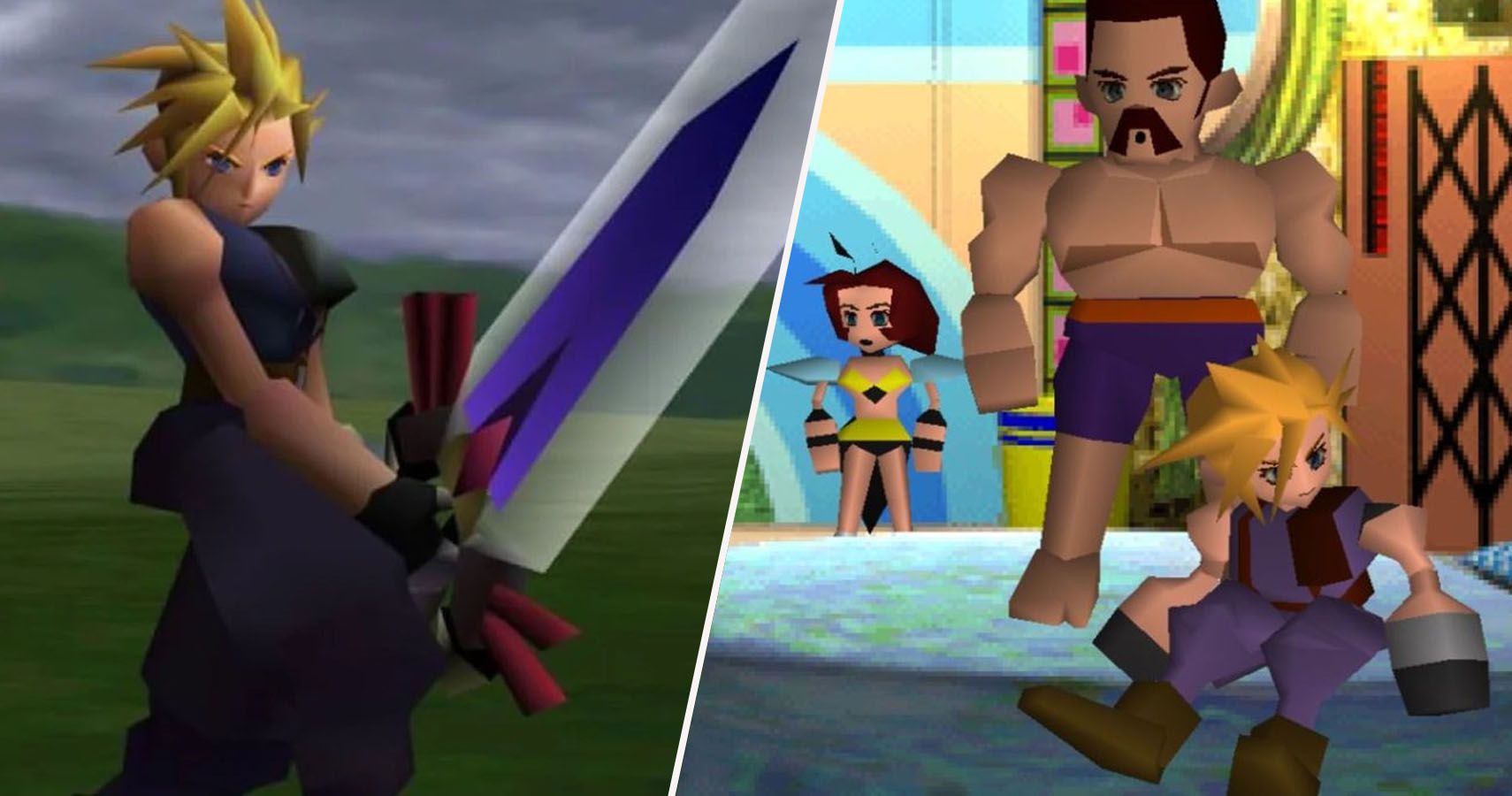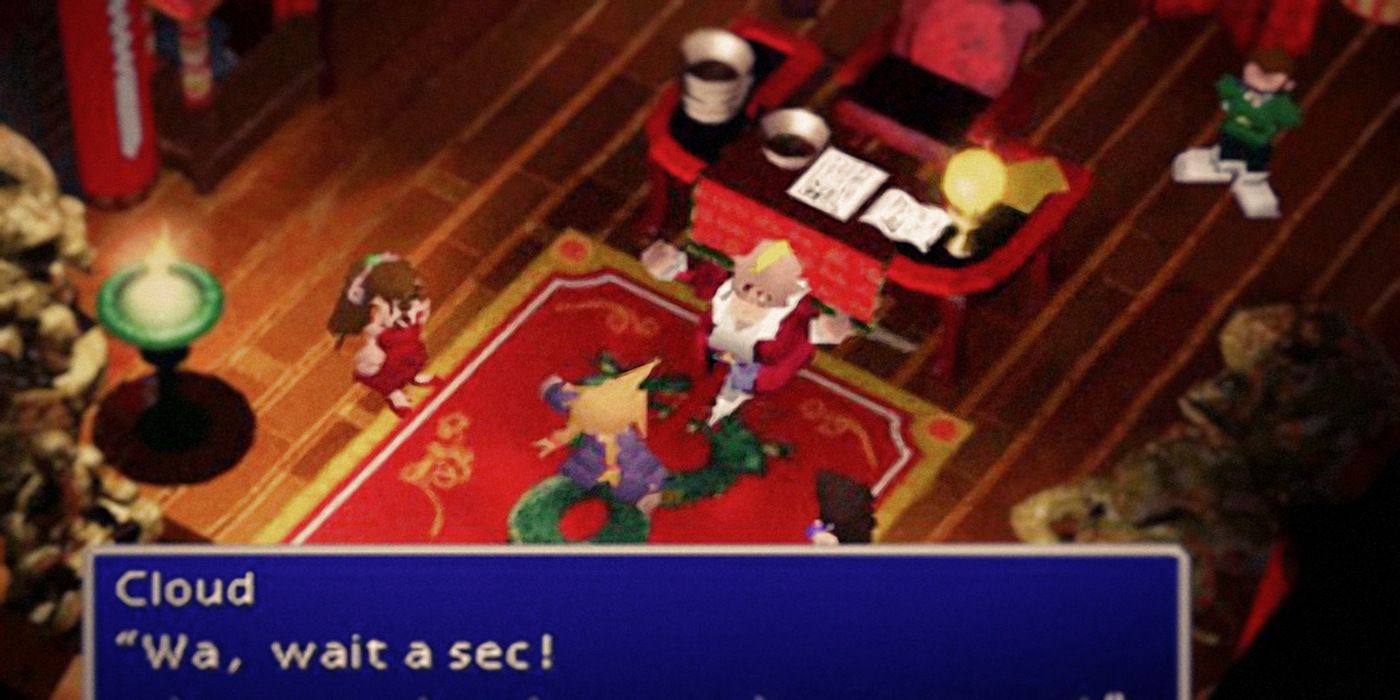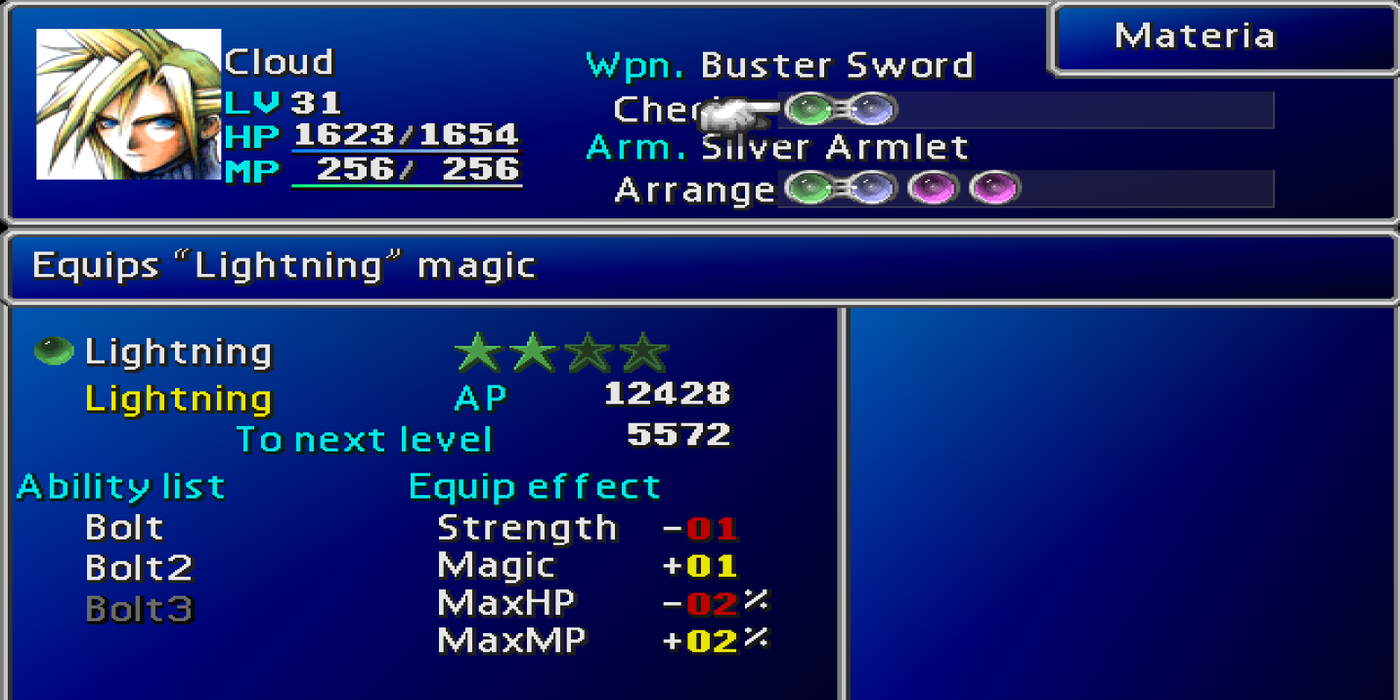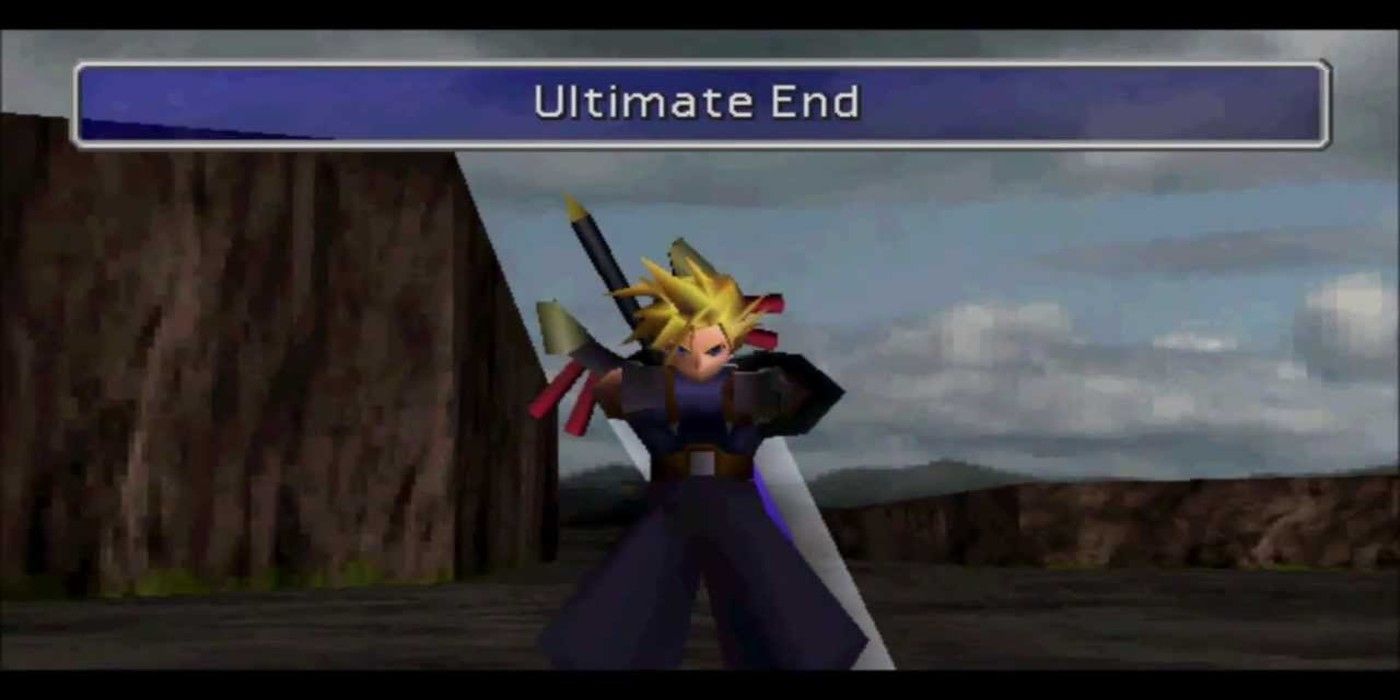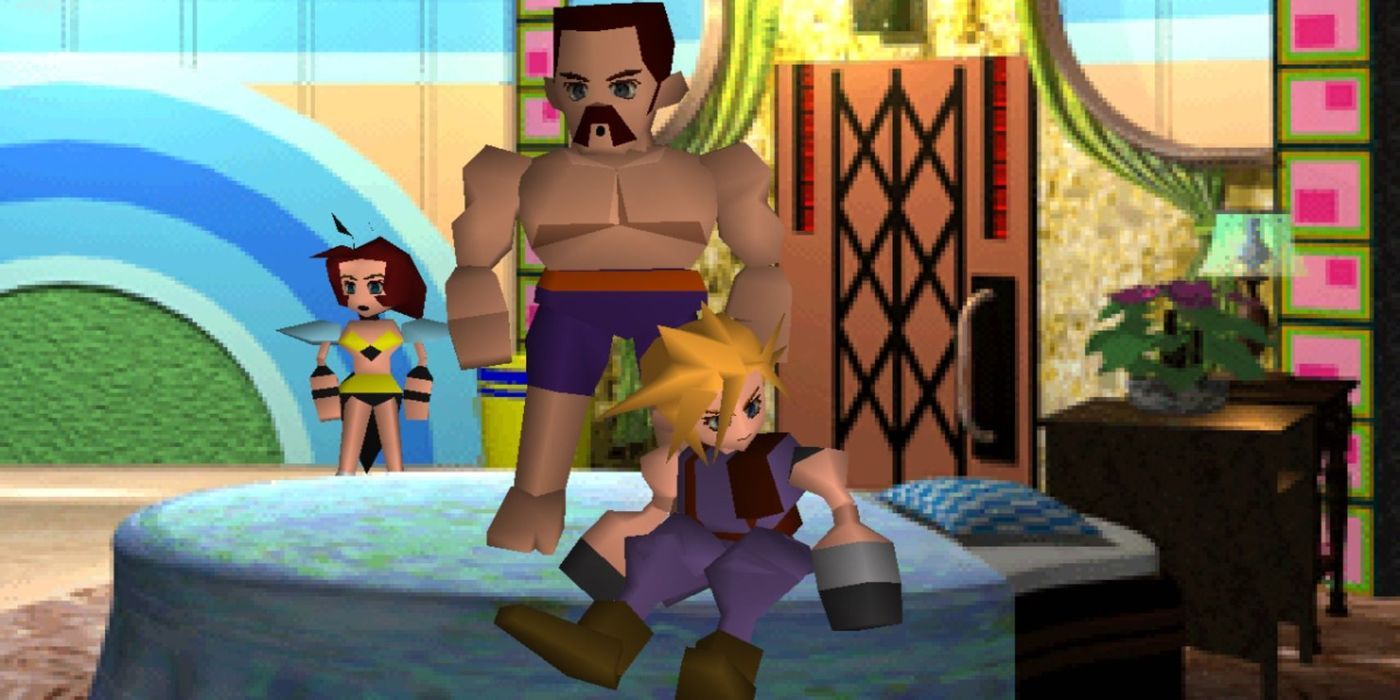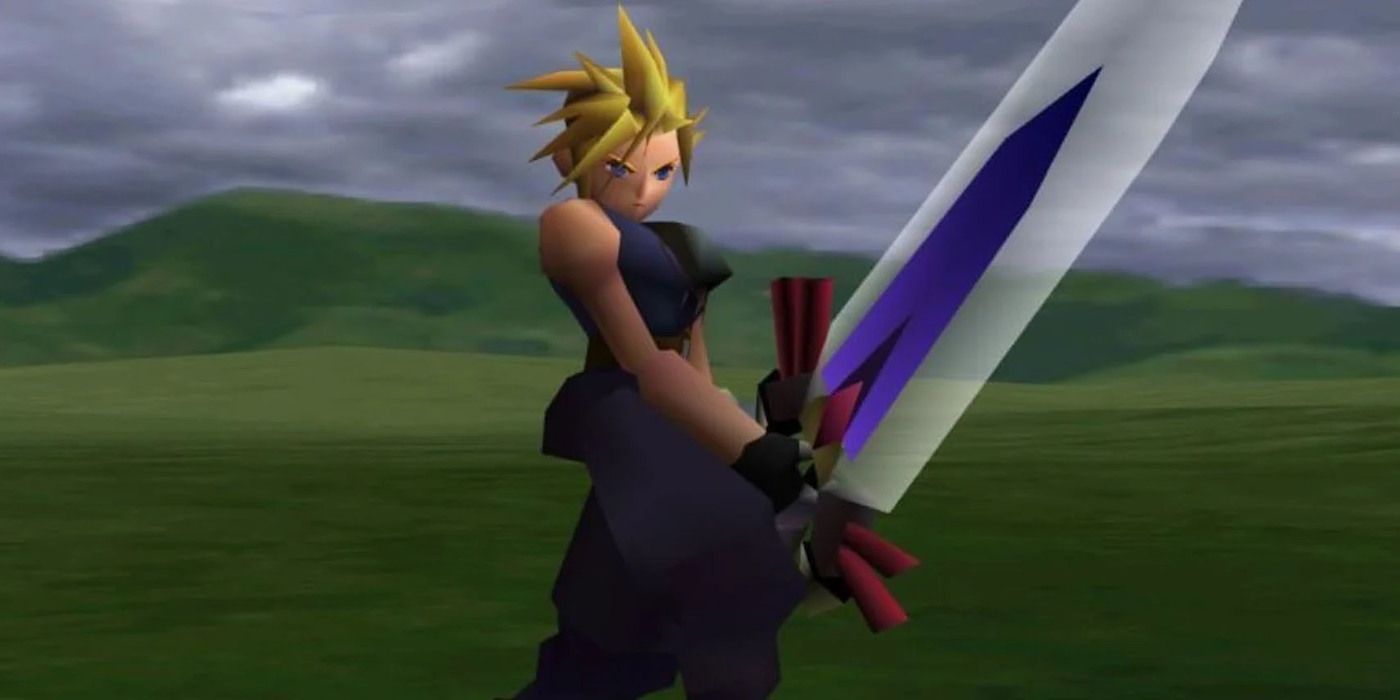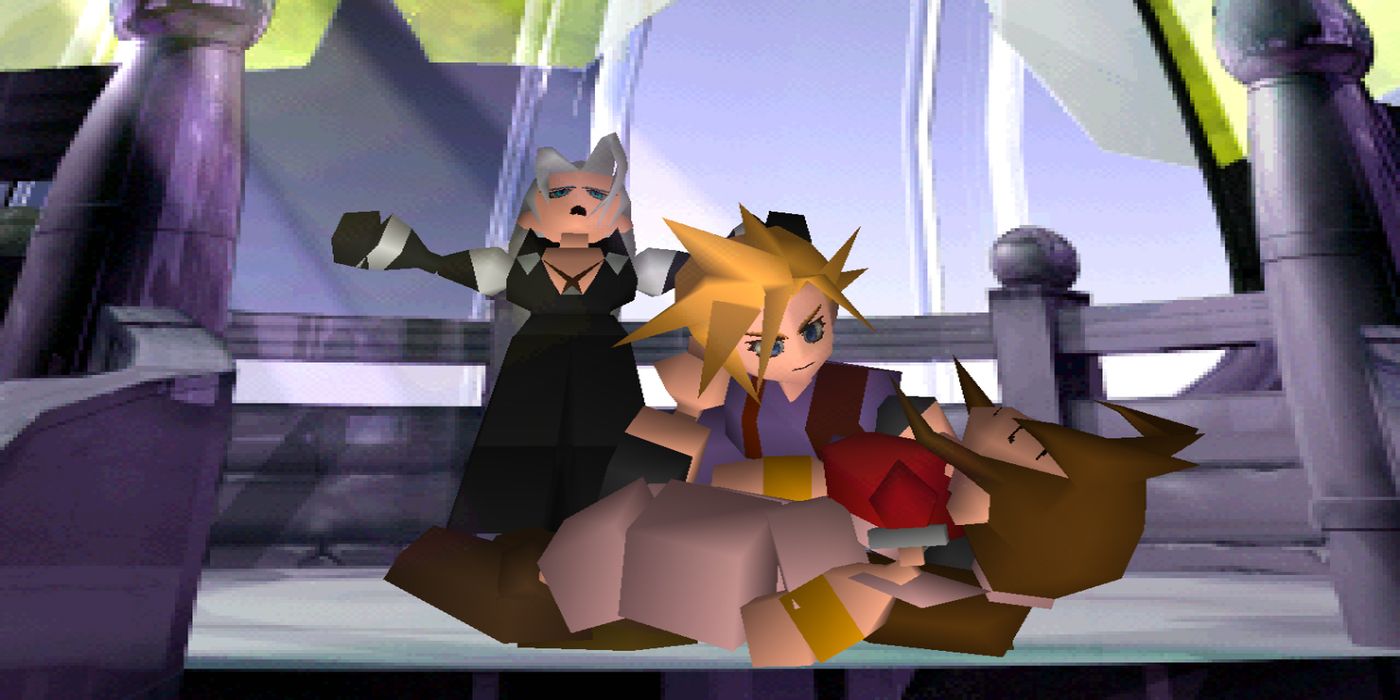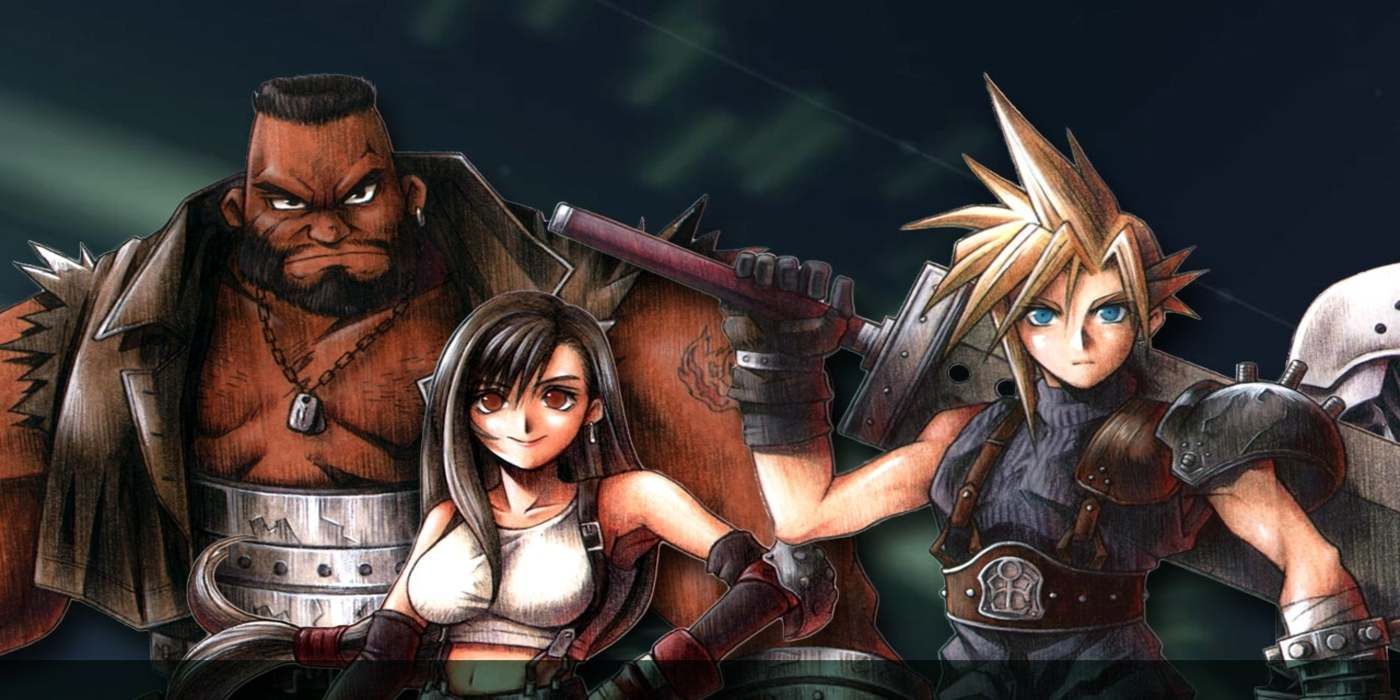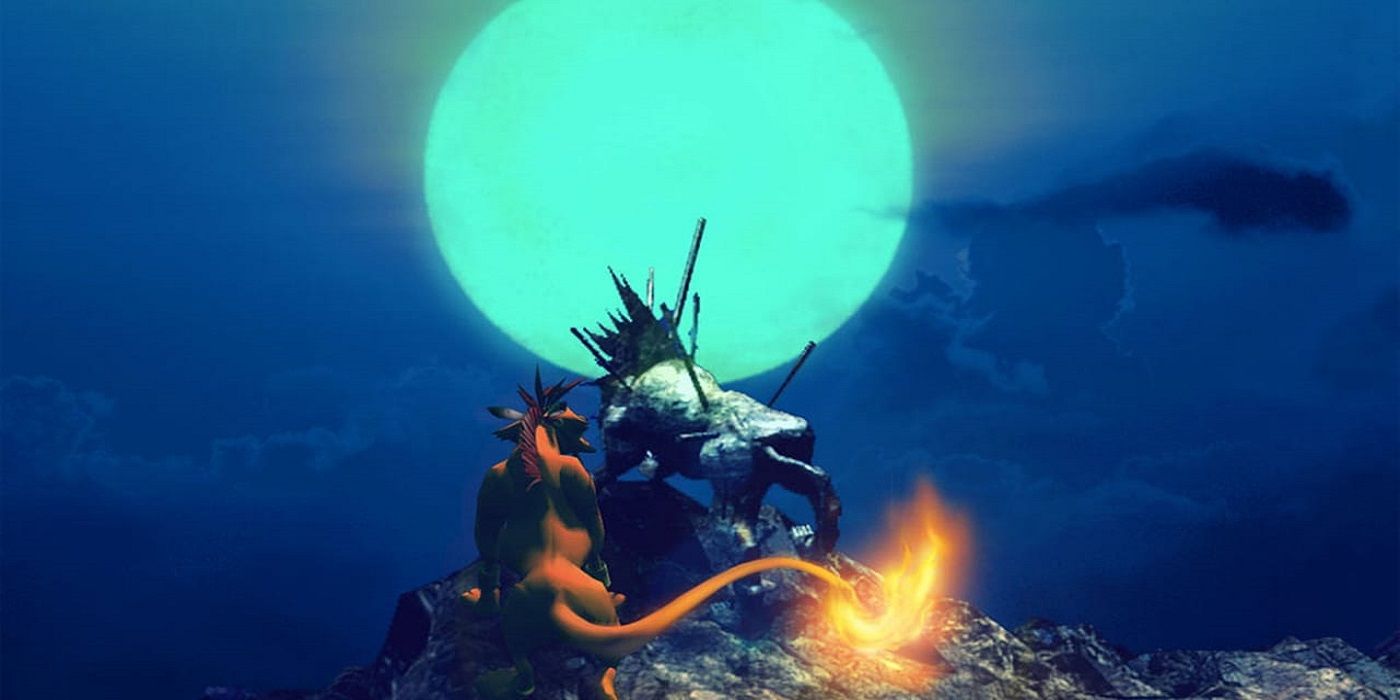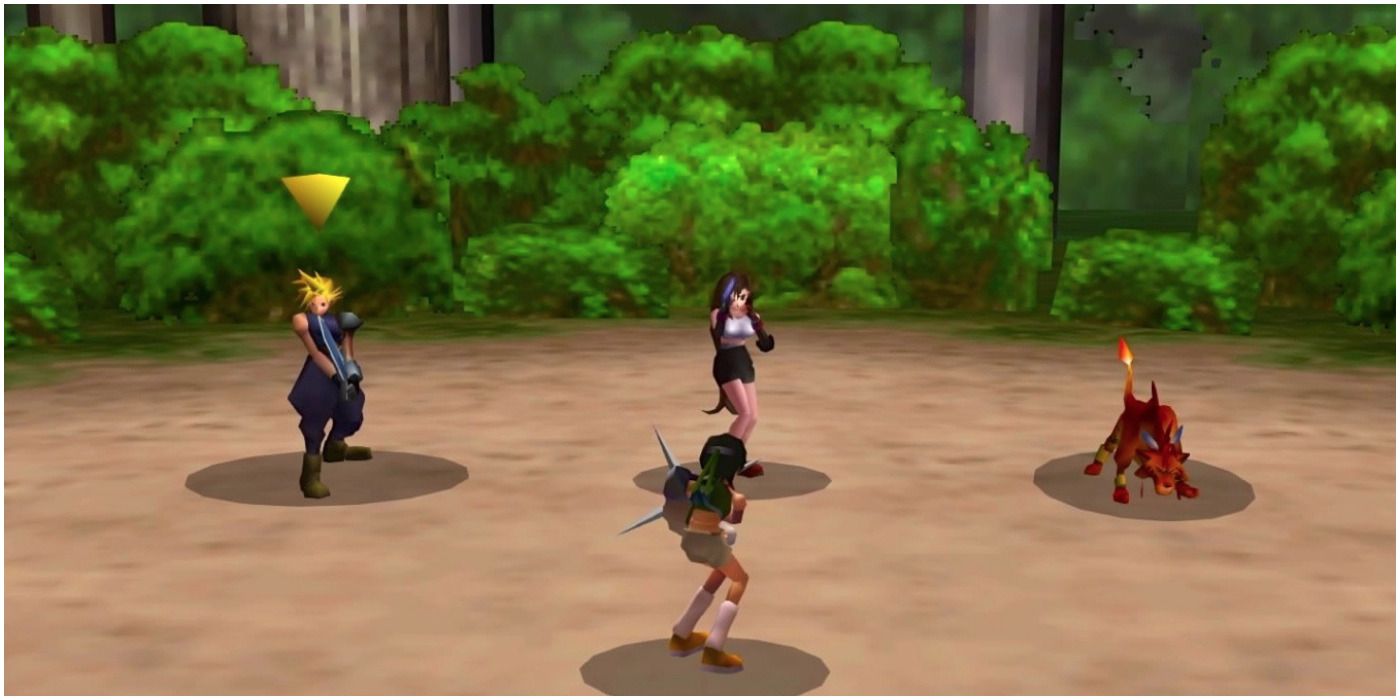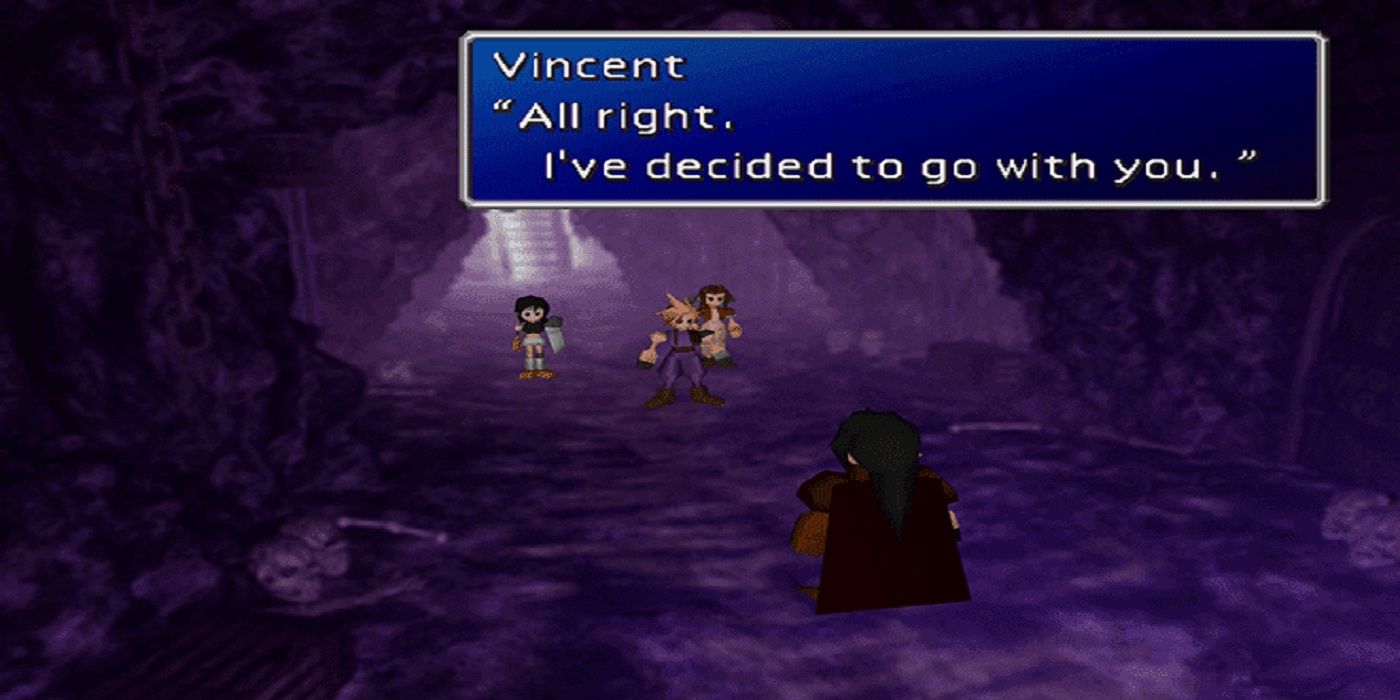Games are getting bigger and bigger as 100gb installations continue to set some uncomfortable precedents, but it actually feels like modern games are lacking in content compared to their brethren of yore. Just compare Final Fantasy VII Remake to the original Final Fantasy VII. The former is a good game, but it fails to match the scope of content FFVII had all the way back in 1997.
Even though the RPG is bursting with side quests and optional content, the original Final Fantasy VII saw quite a lot of cuts. The finished product very much feels like a complete and cohesive package, but the fact of the matter is that FFVII could have been a very different game with more time.
10 Cloud’s Mysterious Panties
Crossdressing with Cloud is one of the more endearing sequences in Final Fantasy VII, and while the original’s rendition isn’t half as detailed or dynamic as the Remake’s, it’s still a very charming moment in Final Fantasy VII’s early game. Originally, however, the sequence was supposed to be a bit more involved.
Along with the dress, wig, and tiara, Cloud would have been able to obtain “mysterious panties” to complete the ensemble. While a funny gag, SquareSoft likely realized that there would realistically be no need for Cloud to go all in. Still, one has to wonder who in Wall Market would give Cloud panties.
9 Booster Materia
Considering just how much Materia is in the final game, it only makes sense that the developers ultimately cut a few before Final Fantasy VII’s release. Notable among these cut Materia includes a “Booster” Materia, which some speculate to have boosted AP earned at some point.
Since EXP Plus Materia exists, which increases experience gained at the end of battle, that’s not an unreasonable theory by any stretch of the imagination. Of course, one has to consider why this specific Materia was removed. After all, grinding for AP is quite the process– especially for those aiming for Master Materia. Booster could have helped.
8 Dual Materia
Final Fantasy VIII notably features an ability called Double which allows the user to cast two of the same spell at the same time. Considering how powerful magic is in Final Fantasy, this is quite the handy tool. Taking into account Dual Materia’s name, some have speculated that the idea for Double-casting actually originated in FFVII.
While Dual Materia itself wouldn’t make it into the final game, a similar mechanic to Double ultimately would: W-Magic. Found in the Northern Cave, W-Magic basically functions exactly like Double– though it comes so late in the game few will actually make use of it outside of the WEAPON fights.
7 The Honeybee Inn Was A Lot Darker
Believe it or not, there’s actually a considerable amount of content cut from the Honeybee Inn in the original Final Fantasy VII, and little of it actually coincides with the Remake’s vastly revised (but still very well done) Honeybee Inn. While the PS1 Honeybee Inn has a love hotel vibe, it was originally supposed to be even more explicit.
What remains in the game is basically what SquareSoft deemed appropriate for Final Fantasy VII– the majority of the Honeybee Inn’s planned content deemed too mature. It’s really no wonder the Remake chose to take the Honeybee Inn in an entirely different direction (though the implications are still lightly there.)
6 Cloud’s Motivation Changed
Cloud’s main motivation in Final Fantasy VII is to hunt down Sephiroth, but that doesn’t become his motivation until after Midgar. Early game, Cloud is just along for the ride as a former SOLDIER turned mercenary. Aerith then becomes his main motivation before Sephiroth enters the picture and the story moves along from there.
Originally, however, Cloud’s desire to pursue Sephiroth was going to be his principal motivation from the start. He and Tifa were to even exposit their backstory in greater depth after the first major mission instead of much later in the game. The final approach not only builds Sephiroth as a stronger character, it reveals Cloud & Tifa’s stories at a better pace.
5 Aerith’s Other First Love
Zack Fair is notable for not only being Aerith’s first love, but the man Cloud modeled his psyche after following his mental breakdown at the hands of Hojo’s experiments. While Cloud & Aerith never learn about their connection, Zack originally wasn’t meant to be Aerith’s first love. Rather, the team briefly intended for it to be Sephiroth.
It’s interesting to imagine how this would have changed things– especially Aerith leaving with Sephiroth come the end of Disc 1. Sephiroth killing her would likely come as an even bigger shock, while contrasting him with Cloud more directly. All the same, it’s too clean a way of tying the main cast together– a role which Zack fulfills better and with subtlety.
4 The Death Of The Party
Aerith’s death is one of the most impactful moments not just in Final Fantasy VII, but in the video game medium. Her death was a reminder of life’s impermanence, and the fact it was so real– with no drama– made it hit harder. Originally, the developers wanted to double down on this, killing all but three party members.
Anyone who was not given a parachute during the descent to Midgar would ultimately die before the sequence was over, leaving the player only with the characters they brought with them in the final party. Honestly, it’s for the best this didn’t happen. While memorable, it would have severely cheapened Aerith’s death, the ending, and several character arcs.
3 Red XIII Almost Had His Own Villains
It’s honestly kind of weird that Red XIII was experimented on personally by Hojo, a fact which ends up getting little to no acknowledgement in the story proper once the party leaves Midgar. Red XIII’s major arc ends up happening at Cosmo Canyon, and from there he more or less functions as a developed character for the rest of the game.
Originally, however, Red XIII was to have his own squad of “XIII” brethren also experimented on by Hojo who would periodically appear over the course of the game. When one remembers that the party is actively challenging Shinra, the Turks, and Sephiroth as active villainous factions, it’s perhaps for this fourth set of baddies never made it in.
2 Yuffie Was Supposed To Be Mandatory
The fact Final Fantasy VII has optional and secret party members at all is genuinely one of the coolest things about it, but both Yuffie Kisaragi and Vincent Valentine were originally intended to be mandatory party members. Running out of time, however, the developers needed to pick and choose what to give priority, with Yuffie & Vincent losing out.
Not only was Yuffie’s questline in Wutai meant to be mandatory (along with likely being a much larger part of the game,) she was intended to be in her mid-20s, not a 16 year old girl. Considering she tries to kiss Cloud during their Gold Saucer date, it probably would have been best to leave her in her 20s.
1 Vincent’s Entire Arc
Just like Yuffie, Vincent was relegated to a secret side character, but his sidequests unfortunately weren’t salvaged into the game. Honestly, neither was his arc for the most part. Although players can visit Lucrecia’s Waterfall near the end of the game to get a sense for Vincent’s backstory, there’s not much else to chew on.
The developers seem to have liked Yuffie as a character quite a bit, prioritizing her over Vincent. All the same, this actually works for Vincent’s status as a secret character. He’s so elusive, the entire basis of his personality is tucked inside of a waterfall players will only gain access to if they already have him in their party.

